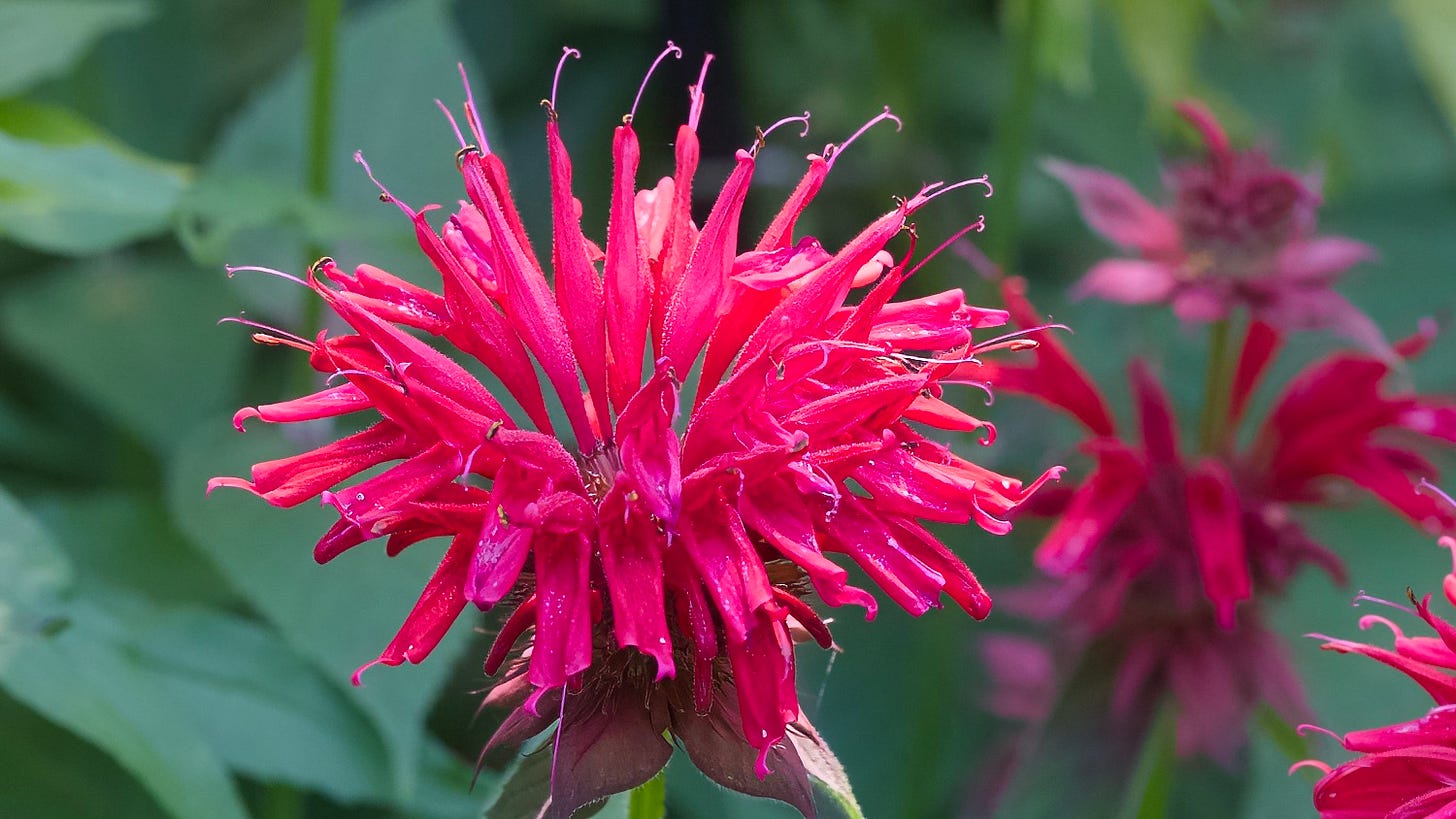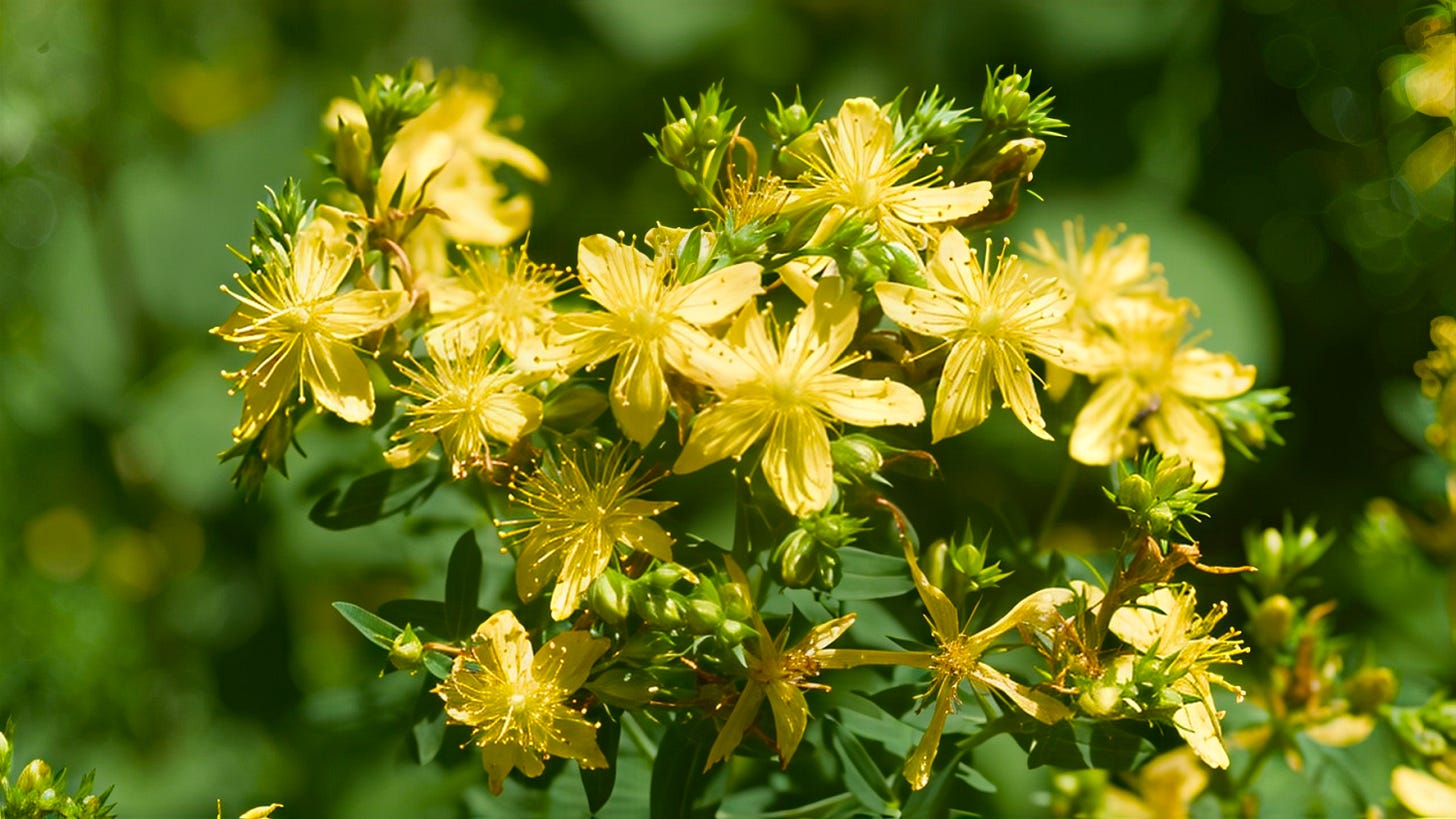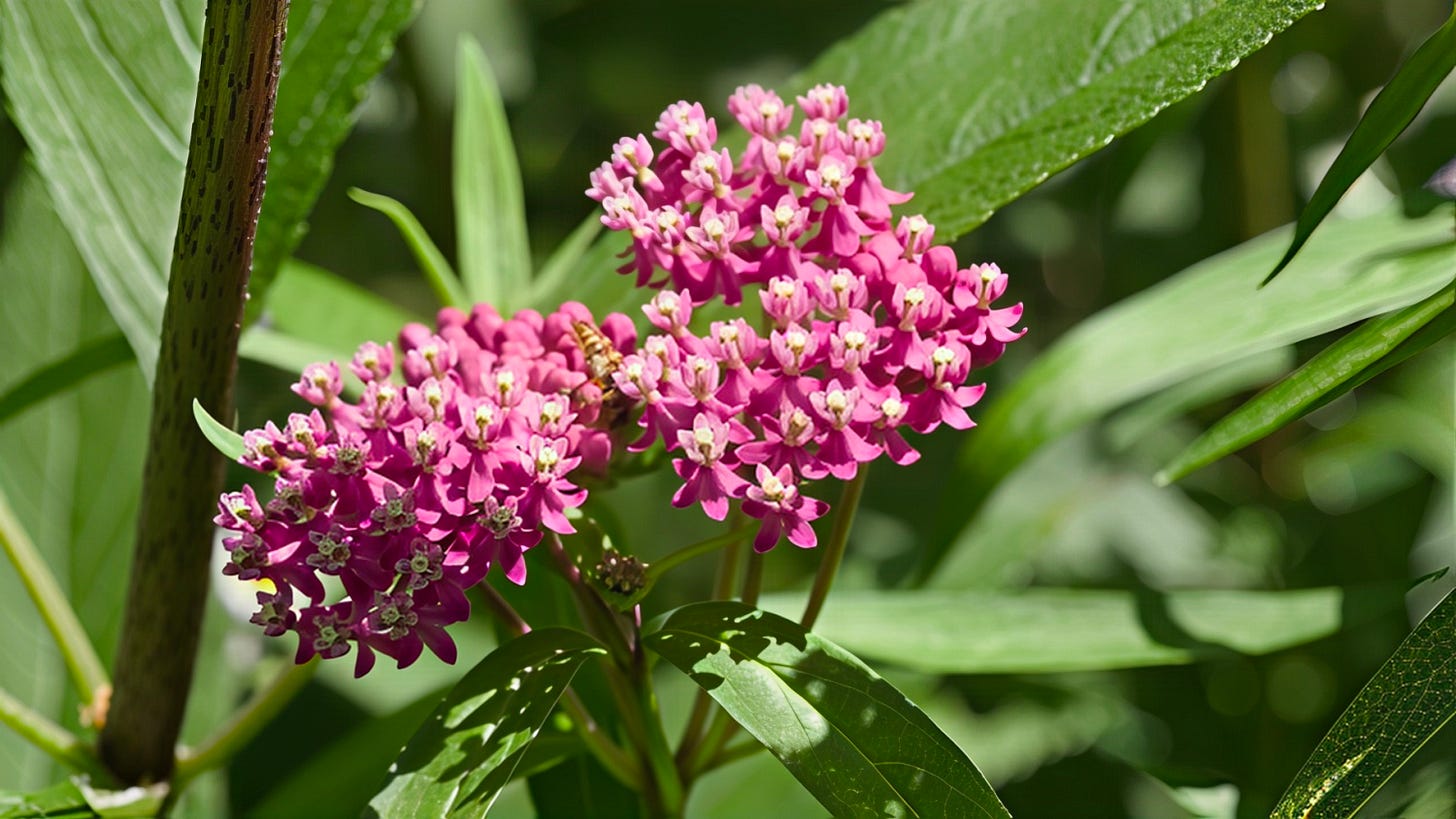Almost a week into what promises to be a hot July. Here are four wildlife, friendly and mostly native species of flowers that opened in the last couple of days and were found while walking around the garden.
Fleabane
One of the several species of Fleabanes (genus Erigeron) - and clearly these are yet more Asteracea.
Its common name, fleabane, is shared with related plants in several other genera and appears to be derived from a belief that the dried plants repelled fleas. They thrive best in relatively dry soils and struggle somewhat with elevated temperatures so it's hard to know how long these are going to be regular features in the environment around here. Support the caterpillars of a range of butterflies.
Monarda
Also commonly known as bee balm, this is the Scarlet bee balm (Monarda didyma) and is one of the two best species around here for attracting Hummingbirds who seem to have trouble passing it by without taking nectar. It grows best in full sun, but tolerates light shade and thrives in any moist, but well-drained soil. Unlike some folk remedies, there appears to be some scientific packing for the indigenous use of an extract of this plant for treating ulcers. This is probably associated with the fact that it is a natural source of the antiseptic thymol, the primary active ingredient in modern commercial mouthwash formulas.
St-John’s Wort
Common St. John's Wort (Hypericum perforatum) is native to much of Europe, West and Central Asia, and parts of Africa and China and has been widely introduced elsewhere, thriving in well-drained, temperate habitats such as meadows, hillsides, and open woods with moderate rainfall and mild temperatures. It is a resilient, toxic, and invasive plant that reproduces sexually and vegetatively, supports specialized insect herbivores, suffers from plant diseases, and poses ecological and agricultural threats in many parts of the world. Extracts are marketed as remedies for mild to moderate depression (for which it is approved in the European Union). however - Important - it interacts with various medications by accelerating their metabolism and should be used under clinical advice only if other medicines are also being taken.
It is, however, rather attractive.
Swamp Milkweed
Swamp Milkweed (Asclepias incarnata) is one of the several milkweed species that are essential to the life cycle of the monarch butterfly which feeds on the flowers and lays eggs on the plants. The emerging caterpillars feed on the leaves and cannot survive on non-Asclepia plants. The plants have specialized, thickened white roots which can function in heavy, wet soils that are low in oxygen … all of which would make you think it needs damp places - not so, I can think of at least three locations near here where the soil it goes in is anything but moist.







